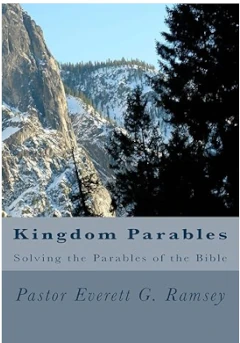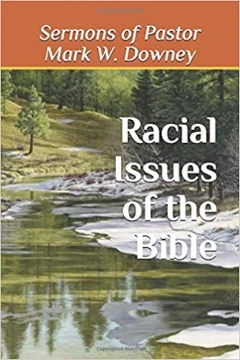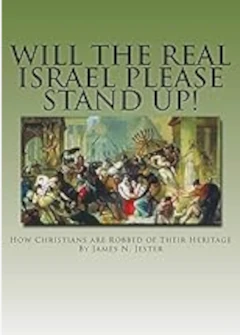Identifying Israel - Part 2
By Jim Jester
Complete series available in book format: Will the Real Israel Please Stand Up?
In Part 1 of this series I proved who the imposters were who claimed to be Israel from their own words and the Bible. I now want to set them aside and give you more history of the real Israel (not the counterfeit one or the “spiritual” one). My source for the historical information is “The Lost Ten Tribes of Israel Found” by Steven M. Collins, 1995; now out of print. He stressed the importance of this subject in the Introduction to his book.
Since the Bible is adamant that the ten tribes of Israel would survive, be multiplied, and be identifiable nations in the latter days, those Christians who assert that the ten tribes of Israel “died out” or “cannot be located in the modern world” unwittingly call God a liar. Since God promised in the Bible that he would vastly multiply the ten tribes’ population after their exile from Palestine, and that they would have major roles in the latter days, if it can be proven that these things did not occur, then it can be shown that the Bible is a hoax. Nothing less is at stake. Those who deny the modern existence (and identifiability) of the ten tribes of Israel are actually attacking the foundation of the Christian religion: the credibility and infallibility of the Bible!
The prominent Jewish historian, Josephus, of the first century A.D. commented on the immense population of the ten tribes of Israel in their new homeland in Asia. So here he was, eight centuries after their removal from Palestine and he did not regard them as being “lost.” The ten tribes can easily be identified in the first century and their later migrations can be traced in the records of secular history from then on and up into the modern era.
The Phoenician Connection
I also had mentioned the Phoenician/Hebrew alliance during the reign of David and Solomon. Centuries before there was an empire built by Greece or Rome there was an empire whose domain, colonies and influence included both the Old and the New World. That empire was Israel under David and Solomon until the time it broke up into separate remnants. The “Phoenicians” also established an international empire approximately the same time (1000-700 B.C.). We shouldn’t forget that the Greeks gave the name “Phoenicia” to the whole region on the eastern shores of the Mediterranean Sea and to the alliance of people there which was then headed by Israelites. Another historian comments:
“The very word ‘Phoenician’ was unknown to them; the label was pasted on them by the Greeks and preserved by the accident that the Greek language and its literature, and not the Phoenician, have been passed down to us” (Edey, “The Sea Traders”, p. 9).
Steven Collins concludes:
…the Israelite alliance with Tyre and Sidon was called Phoenicia by the Greeks, and that the term “Phoenicia” initially designated a whole region, not merely a few city states on the shores of ancient Lebanon. …under Kings Solomon of Israel and Hiram of Tyre, the Israelites and city states under King Hiram became virtually one people, with mingled work forces laboring together on huge building projects and with their navies crewed by sailors from both nations. Since the Israelites and the inhabitants of the city-states shared a common language, common customs and a common race, the differences between them amount to mere nuances when viewed from a perspective almost three thousand years after their existence. The Israelite dominance in that empire was forgotten because the Israelites left the region. Since the inhabitants of the non-Israelite city-states did stay in that area of the earth, the name “Phoenicia” rested on non-Israelites after 700 B.C. However, when historians refer to the Phoenician Empire and its international power and influence around 1000-700 B.C., they are actu-ally identifying the empire of Israel to which Tyre and Sidon were allied. (Ibid p.76)
Israel’s Rise to Greatness
Near the beginning of the first millennium B.C. the Israelites were composed of 12 tribal units which had only recently been brought under King Saul. After he had been killed in battle David became king over the Israelite tribe of Judah while the House of Saul continued to rule over the remaining tribes for several years. Finally, David became king over all the tribes of Israel and began molding them into a unified kingdom with a powerful military force (approx. 1000 B.C.). According to 1 Chronicles 21:5, David could field over a million and a half men! If that was his army you can imagine how massive Israel’s total population was at the time. This number did not include the women, children, elderly or maimed.
Israelites and Phoenicians were of Semitic origin and spoke the same language. They also had a common enemy, the Philistines. The king of Tyre, Hiram, was surely aware of the military power of Israel being flexed to his south. He certainly had no desire to be an enemy of King David. The city-states were also dependent on foodstuffs from Israel and Judah. So King Hiram initiated a peaceful approach and built him a house (see 2 Samuel 5:11). This seems to have been the inspiration for David to build a house for God (see 2 Samuel 7:1-3). King Hiram also had many trading contacts throughout the ancient world and King David was known for his military expansionism (2 Samuel 7:9). Collins says (ibid p. 9), “The Phoenician-Israelite alliance united the world’s greatest commercial and naval power with the immense land power of David’s army, making this alliance one of the strongest military powers in the world at that time.”
With his enemies conquered David turned to his project of collecting materials for the temple of God, which his son, Solomon would build. With vast war booty, tribute payments from vassal nations, and access to raw materials from around the world via the maritime routes of his Phoenician allies, he amassed tons of everything imaginable. Stone, wood, silver, gold, copper, and iron, so much it was “beyond weighing” in the words of the scripture. (See 1 Chronicles 22:1-16, 29:2). In today’s terms this had to be in the billions of dollars! With the lesser precious metals “beyond weighing,” such as iron and copper, one has to ask where did all this come from?
In the book, “Bronze Age America”, by the late Dr. Barry Fell, Professor of Harvard, documents that copper trading between North America and the Old World existed prior to and during the reign of King David. He cites evidence from ancient manuscripts that Norse kings carried on a copper trade with the New World in the St. Lawrence River area as early as 1700 B.C., seven centuries before the reign of King David! If the Old World civilizations had traded with the inhabitants of North America, could the Phoenicians have been far behind?
From Dr. Fell’s book (Ibid p. 261):
“Around the northern shore of Lake Superior, and on the adjacent Ile Royale, there are approximately 5,000 ancient copper mine workings. In 1953 and 1956 Professor Roy Drier led two Michigan Mining and Technology expeditions to the sites. Charcoal found at the bases of the ancient mining pits yielded radiocarbon dates indicating that the mines had been operated between 2000 B.C. and 1000 B.C…. The most conservative estimates by mining engineers show that at least 500 million pounds of metallic copper were removed over that time span, and there is no evidence as to what became of it.”
David’s reign is now generally fixed at 1010-970 B.C. and since the date of this mining is the same time period, it seems likely that some of this ore went to King David. The observation that “there is no evidence as to what became of it” means that there was no evidence (Ibid pp. 263 and 268 of Fell’s book) that this North American copper was used in North America. The Bible again contains the answer that King David was stockpiling copper ores around 1000 B.C. Secular sources confirmed the North American copper mines ran out of ore around the same time. Other evidence is that Israel had smelting facilities at Ezion-Geber.
At the time of David’s death Israel had become an ancient “superpower” and clearly shows that they were not an obscure people in the ancient world stuck in the small land of Palestine. Rather, they were the dominant power on earth with huge military resources, advanced technology, control over land and sea trade routes and a close alliance with the dominant maritime power of that time. The Bible describes the interactions of the great powers of the ancient world not insignificant events which affected only a few people in ancient Palestine.
The “Golden Age” of Israel
King Solomon was given great wisdom by YHWH God thus he excelled in many fields. He was a ruler, scientist, naturalist, builder, author, and songwriter. He collected treasures, art works, singers, musicians, plants, animals, etc. the zoos, museums, and cultural activities truly made it the “golden age” of the Israelites (See 1 Kings 4:29-34).
The temple project took seven years to complete. Since all the tribes of Israel and the various Phoenician city-states worked together on many building projects they would have been cemented together into a single entity. It is no wonder his fame spread rapidly with the maritime fleets of the city-states carrying the news about his activities. Not only were they melded on land but due to the building projects they were becoming one at sea. I Kings 9:26-27 states, “And King Solomon made a navy of ships in Ezion-geber, which is beside Eloth, on the shore of the Red Sea, in the land of Edom. And Hiram sent in the navy his servants, shipmen that had knowledge of the sea, with the servants of Solomon.”
Notice that this location (Ezion-geber) is the same place where the industrial activity of smelting metals was going on. He may have sailed around Africa to bring in copper from America, or there may have been another possibility. Modern man hailed the construction of the Suez Canal which was a great engineering achievement, but they were not the first ones to do it. Ancient civilizations had also linked the Mediterranean and Red Seas on several occasions. Sesostris III, of Egypt, is credited with connecting the Nile River Sea with the Red Sea. It is dated approx. 1380 B.C. Efforts to reopen or maintain this route have been attributed to Ptolemy Dynasty of Egypt (3rd century B.C.), Trajan the Roman Emperor (ca.100 A.D.), and the Moslem rulers of Egypt (7th century A.D.). Also, Darius the Great (521-486 B.C.) is credited with building a waterway between them (See “Short History of the Near East” by Hitti). Since the Egyptians had already established a waterway link before the rule of Solomon it is likely he may have used it as a link to the Atlantic Ocean.
Another important event of this time was that Egypt joined the Israelite/Phoenician alliance making it even stronger. 1 Kings 3:1 notes that Solomon’s first wife was a daughter of the Egyptian Pharaoh. With Solomon in close alliance with King Hiram of Tyre and the Pharaoh of Egypt, Israel now became a tripartite alliance under Solomon’s leadership.
In the latter years of Solomon’s life he increasingly grew farther away from God. This is how sin operates, slowly, a little at a time, until it has a grip on you and have you bound as if you were tied with a rope. Isa. 5:18, “Woe unto them that draw iniquity with cords of falsehood, and sin as it were with a cart rope.” Pro. 5:22, “…He shall be holden with the cords of his sin.”
King Solomon collected lots of things (as noted above). It is now obvious that he collected women (1,000) as well. Here is the account of how far Solomon went from God’s Law. I Kings 11:1-10:
“Now king Solomon loved many foreign women, together with the daughter of Pharaoh, women of the Moabites, Ammonites, Edomites, Sidonians, and Hittites; …which Jehovah said unto the children of Israel, Ye shall not go among them, neither shall they come among you; for surely they will turn away your heart after their gods: For it came to pass, when Solomon was old, that his wives turned away his heart after other gods; and his heart was not perfect with Jehovah his God, as was the heart of David his father. …Then did Solomon build a high place for Chemosh the abomination of Moab, in the mount that is before Jerusalem and for Moloch the abomination of the children of Ammon. And so did he for all his foreign wives, who burnt incense and sacrificed unto their gods. And Jehovah was angry with Solomon, because his heart was turned away from Jehovah, the God of Israel, who had appeared unto him twice, and had commanded him concerning this thing, that he should not go after other gods: but he kept not that which Jehovah commanded.”
From this we can see many violations of God’s Law: Not keeping separate from other races, including their religion and the building of places for the gods. God had even warned him more than once, yet he continued. Do we in America see any parallels here? God may be patient, but judgment will come.
The Golden Age of the united kingdom of Israel was over and the downward spiral began. The hedonistic religions who glorified sex and worshipped the host of heaven and built idols (such as the obelisk - a phallic symbol) that represented these things continued during the migrations of the Israel people. In America we also have many of these same symbols. The Hebrew nation of Israel had been a monarchy with the Law of God as its constitution. As long as it followed Yahweh’s Law it prospered and became the international super-power of its day. After the death of Solomon the kingdom was divided as “Israel” in the north and as “Judah” in the south. We in America had our division of North and South as well. We also were 13 tribal units. Are we repeating history?
An Important Distinction
The books which compose the Bible are to be viewed in context with each other and to the Hebrew mindset of that day. Our educational (I should say “indoctrinational”) institutions train us not to think Biblically, so we have to de-program our minds.
From the point where the kingdom of Israel was divided into two entities, the Bible makes clear who it is talking about. “Israel” or “The House of Israel” comprised the 10 tribes – headed by the largest, Ephraim & Manassas. “Judah” or “The House of Judah” comprised 3 tribes - Judah, Benjamin, Levi. From this point forward the Bible always recognizes these two nations, not just the one. It is the biggest mistake not to make this distinction when interpreting the Bible. Without it the Bible makes no sense and actually contradicts itself in many places. The masses of people in America and even the churches think that the words Israel, Judah (or “Jew”), Hebrew and Semite are all synonymous. Nothing could be further from the truth.
Take the slang word “Jew” for example, which is derived from Judah, one of the sons of Jacob/Israel. It can have multiple meanings:
- Geographic aspect- Jew can mean Judean for the land of Judea.
- Racial aspect- Jew can mean Judahite denoting a genetic connection with the tribe of Judah.
- Religious aspect- Jew or Jewish means the Talmudic traditions of the elders.
So in any discussion it is important to define the word being used.
Let’s take the example of Jesus Christ. We constantly here that he was a “Jew.” This is misleading. The word as used today refers to those who wear old black hats, practice Judaism, celebrate Hanukah, and support the Zionist regime of Israel in the Middle East. Jesus did not do any of these things but rather opposed the Pharisees who were the forerunners of modern Judaism. The Bible is clear that these Judaizers “sought to kill Him.” Jesus was not a “Jew” in any religious sense whatsoever. He was always in trouble with the religious authorities of his day. Neither was he a “Jew” in the racial sense as used today, because as I have shown (in Part 1), today’s Jews are not descended from a pure lineage of the tribe (family) of Judah. We know that Jesus was descended from Judah; therefore he was a true “Jew” (if used in the racial sense; also Rev. 2:9) or Judahite (a better translation) which also makes Him an Israelite (Semite and Hebrew included). We could also say that Jesus was a “Jew” (used in a geographic sense) since he lived in the country of Judea. But a far better translation (since it is not misleading) is Judean. With all the shades of meaning to the word “Jew” it can be a very deceptive term. It is far more accurate to just say that Jesus was an Israelite; just as He did when He saw Nathanael (John 1:47) and said, “…behold an Israelite indeed, in whom is no guile!” Or, as Paul, “…I also am an Israelite, of the seed of Abraham, of the tribe of Benjamin.” Like it or not, the Bible is a racial book; and the sooner Christians realize this, the sooner we can understand the Bible.












